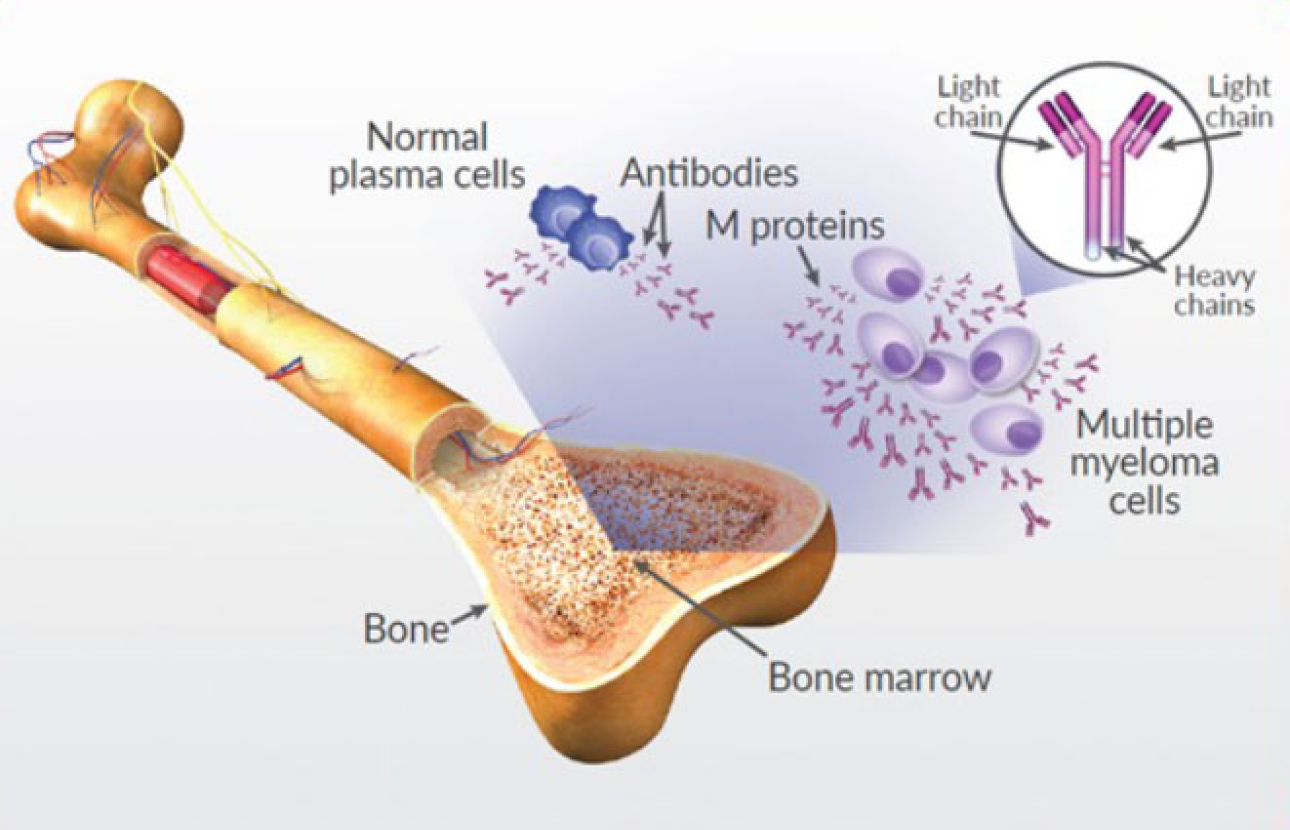Bishop Allan Kiuna, a revered figure in the religious community, recently succumbed to Multiple Myeloma, a type of cancer that remains largely unfamiliar to many.
His passing has not only left a void in the hearts of his followers but also spotlighted a critical need for awareness about this challenging disease.
Multiple Myeloma, a cancer that originates in the plasma cells of the bone marrow, is a condition that affects thousands yet remains underreported.
As we reflect on the life and legacy of Bishop Kiuna, it is crucial to understand the nature of the illness that claimed his life, the symptoms, treatments, and the ongoing research that offers hope to many battling this disease.
Nature of Multiple Myeloma

According to a certain research publication, Multiple myeloma is a blood cancer that develops in plasma cells in the bone marrow—the soft, spongy tissue at the center of your bones. In healthy bone marrow, normal plasma cells make antibodies to protect your body from infection.
Plasma Cells: Multiple Myeloma begins in the plasma cells, which are responsible for producing antibodies to help fight infections. In this cancer, a group of plasma cells becomes cancerous and multiplies uncontrollably.
Bone Marrow: These malignant plasma cells, known as myeloma cells, accumulate in the bone marrow, the soft, spongy tissue inside bones where blood cells are produced.
Symptoms
Multiple myeloma occurs more often in males of African descent over 45—and studies are continuing to provide new information on other myeloma risk factors.
As myeloma cells multiply in the bone marrow, they crowd out normal cells, meaning that there is less room for—and decreased numbers of—red blood cells, white blood cells, and platelets. Reduction of blood cells can cause anemia, excessive bleeding, and decreased ability to fight infection. The buildup of M protein in the blood and urine can damage the kidneys and other organs.
Myeloma cells may activate other cells in the marrow that can damage your bones, which can cause bone pain and weakened spots on bones (called osteolytic lesions). This bone destruction increases the risk of fractures and can also lead to increased levels of calcium in the blood (hypercalcemia).
Multiple myeloma symptoms vary from person to person. Often, in the early stages of disease, there are no obvious symptoms. When they are present, symptoms may be vague or similar to those of other conditions.
If your doctor suspects that you may have multiple myeloma, they may run several different urine and blood tests to confirm the diagnosis.
Treatment Options
Knowing what kind of myeloma you have is important in helping your doctor decide when it is appropriate to begin treatment. Having that knowledge plays an important role in determining the stage of multiple myeloma.
Chemotherapy: Uses drugs to kill myeloma cells or stop their growth.
Targeted Therapy: Drugs that target specific proteins or genes involved in the growth of myeloma cells.
Immunotherapy: Uses the body’s immune system to fight the cancer.
Stem Cell Transplant: High doses of chemotherapy followed by a transplant of healthy stem cells to rebuild the bone marrow.
Radiation Therapy: Uses high-energy rays to destroy myeloma cells in specific areas.
Research is ongoing to find better treatments and potentially a cure for multiple myeloma. Clinical trials are exploring new drugs, combinations of therapies, and innovative approaches like CAR-T cell therapy.
Understanding the nature of multiple myeloma is crucial for recognizing its symptoms, diagnosing it early, and exploring the most effective treatment options to improve the quality of life for those affected.
ALSO READ;


